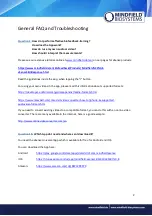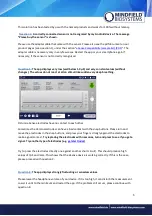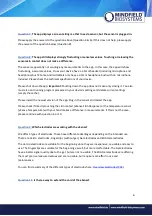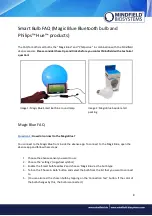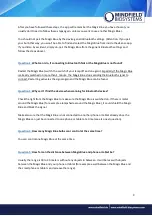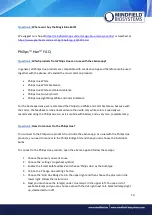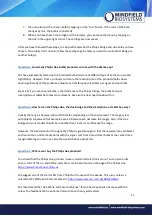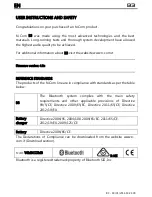
13
The 4 Steps in detail
1. Listening state
The cycle starts in the first step, the listening state. This is the standard default state.
2. Determining signal raise
There are two ways for detecting the start of an SCR start. The values could either raise slowly with a
small step or very fast with a big amplitude. This creates the following to conditions:
1.
The signal is constantly rising for 2 seconds
2.
The difference between the current signal and the pretended base value (the value that is
considered to be the first value in the rising signal. But on this stage, it is not confirmed yet
as a base value) is greater than 0.5 micro siemens.
In simple words the app will react to a sudden signal raise and confirm it as the fluctuation
start and will not wait for 2 seconds (as in the first condition above)
If the signal will fall just even 0.1 micro siemens during a raise, the app will drop out of this second
step and return to the first step (the listening state) again. Otherwise it will continue with the next
two steps 3 and 4.
3. Gathering and calculating SCR (fluctuation)
If one of the two conditions from the second step above are met, the app enters this third step, the
fluctuation. The first signal of the fluctuation period is the base value of a fluctuation signal. During
the whole fluctuation period, the app is detecting the amplitude which is constantly changing. Then
the app starts to calculate the SCR events globally and within a one-minute time window. This results
in the SCR/min value.
4. Initiate recovery phase
The fluctuation is considered to enter the recovery phase (the end of fluctuation) when the signal
falls for more than 50% of the greatest amplitude of the fluctuation period.
This is also the step where the color in the graph is changed (based on the quantity of SCR events
that were occurring). The colors for the SCR background are also calculated (by dividing time
intervals into equal segments and getting the sum of the SCR events from each segment).


